The journal brought to you by:

- Mrs. Angelo’s 3rd grade class from South School in Illinois
- Mrs. Eilers’ 3rd grade class from Visitation School in Illinois
- Ms. Mary Ann Smith, Ms. Wujeck, and Ms. Richardson’s K-2 classes at Peru Catholic School in Illinois
- The 2nd grade at Bartlett Elementary (Loft, Parrish, Wade, Smith, Underwood, and Winburn)
- The 6th grade at Seton Middle School from Moline, Illinois
- Glenview Community Center
- Whitehaven Community Center
- Crosswind Elementary Students: Taylor Baugh in 3rd grade
- First grade at Ursa Major Elementary
- Issac Duffy at Chugiak High School
- Mr. John Trego’s 6th grade class at Mirror Lake Middle School
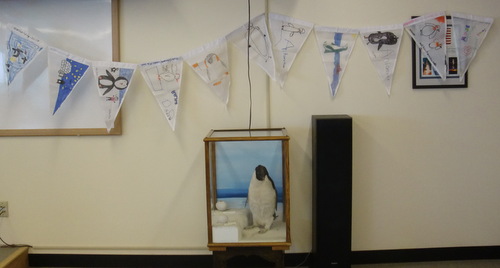
- Crosswind Elementary Students:
- Jacob Woodard in kindergarten
- Ava Brice-Plemmons in Kindergarten
- Landon Watson in 3rd grade
- Marilyn Dubon in 1st grade
- Simeon Nix in 2nd grade
- Jacob Cagle in 1st grade
- Jordan Allen in 4th grade
- Hutson Collinsworth in 1st grade
- Mia King in 3rd grade
- Andy Fichter in 3rd grade
- Elli Loines in 1st grade
Three weeks before my departure date for Antarctica, I decided to take a little get-a-way. With no definite plans (I love to travel that way), I headed east and ended up in Chattanooga, TN. What a wonderful city! The Tennessee Aquarium was my first stop on this mini-adventure. And you’ll never believe what one of their feature exhibits was about – PENGUINS!
Coincidence? I think not!
Let’s take a look at their exhibit, titled ‘Top 10 reasons why penguins rock.’

Number 10: Penguins are not all the same size!
Emperor penguins, the largest species, can reach 4 feet in height. Little blue penguins grow no longer than 16 inches. Gentoo and macaroni penguins are mid-sized birds that grow 24-30 inches tall.

Number 9: There are 17 species world-wide!
Where? These birds are found only in the Southern Hemisphere. Most live in cold water, but some species inhabit temperate waters. Distribution Populations of penguin species vary greatly. Some numbers appear large, but all species are declining. Global warming, oil spills, over-fishing and habitat loss threaten penguin survival. Conservation efforts are underway to prevent the disappearance of these unique birds.

Number 8: Tuxedos provide more than a great look!
The penguin ‘tuxedo’ provides camouflage from predators. The bird’s dark back blends into the dark ocean when viewed from above, while its lighter belly helps it blend into the surface when viewed from below. This protective coloring is called countershading.
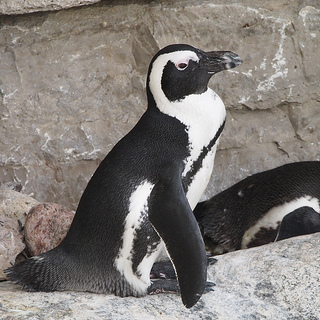
Number 7: Penguins really know how to fish!
In addition to a penguin’s speed and agility in the water, its sharp beak snares fish with ease, and its backward-pointing tongue spines keep a good grip on the fish so it can be swallowed whole.

Number 6: Penguins stay warm even in the cold water!
Dense, waterproof feathers provide nearly 80% of their insulation, but penguins also have a thick layer of fat to help them stay warm. When on land, their dark back absorbs heat from the sun, and they conserve more warmth by huddling in large groups. Could you live in chilly water?
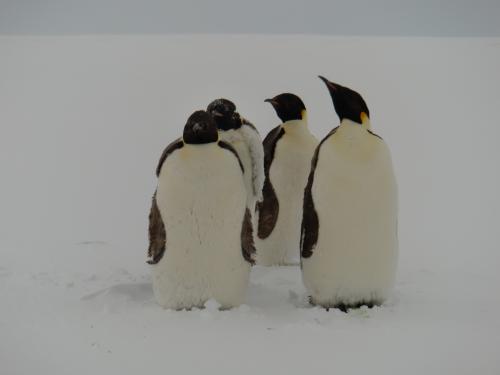
Number 5: Penguins are great parents!
- Penguin parents, like other birds, keep their chicks close to their bodies to keep them warm and safe. Emperor penguins hold their chicks on their feet to protect them in the harsh Antarctic climates.
- Penguin parents feed their chicks and protect them until they molt and grow waterproof feathers.
- Penguin parents identify the call of their chicks among all the calls of the colony. Could you find your chick?

Number 4: A penguin has more feathers per square inch than most other birds!
This bird’s body seems more fur-like than feathered. That is because it is covered with about 80 feathers per square inch. Tiny feathers with down-lined shafts fit tightly together to keep out the cold water. Penguins use their beaks to spread oil on the feathers to make them waterproof and molt all their feathers once a year.
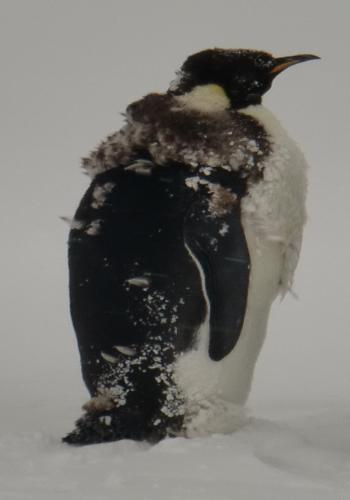
Number 3: Penguins swim four times faster than humans!
A penguin can’t fly but it can speed through the water like a tiny torpedo. Its streamlined body and strong flippers allow it to slice through the water with ease. Some species are capable of short bursts greater than 20 mph and can maintain speeds of 9 mph.

Number 2: Penguins have predators on land and in the water.
Penguin predators include orcas, sharks, seals, birds, and foxes. Penguins rely on their camouflage and maneuverability in the water to evade predators.
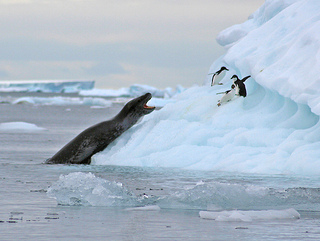

Number 1: Penguins need protection!
Penguins face many survival challenges, four of which are described below. Sadly, all of these challenges can be traced back to human behavior that threatens the survival of these birds. Conservation efforts are underway in many zoos and aquariums. Breeding programs, habitat improvement projects and education initiatives sponsored by these facilities help protect and restore penguin populations. All penguins in the wild are protected by law against hunting and egg collecting. For those species in the Antarctic, the Antarctic Treaty makes it illegal to harm or disturb a penguin or its egg.
Penguins in Peril Ten of the 17 species of penguins are either endangered or listed as vulnerable. Two species are managed under a Species Survival Plan (SSP) by the Association of Zoos & Aquariums (AZA). The map above shows the locations of this special group of animals.
- Galapagos penguin – Endangered
- Yellow-eyed penguin – Endangered
- Erect-crested penguin – Endangered
- Humboldt penguin – Vulnerable (SSP)
- African Penguins – Vulnerable (SSP)
- Macaroni penguin – Vulnerable
- Royal penguin – Vulnerable
- Snares penguin – Vulnerable
- Fiordland penguin – Vulnerable
- Rockhopper penguins – Vulnerable
Threats to Penguins!
- Global Warming – Melting ice shelves and shrinking glaciers caused by global warming are reducing breeding habitats for many Antarctic species, including Emperor penguins.
- Habitat Loss – The extraction of guano for use as a crop fertilizer has destroyed valuable breeding areas of the Humboldt penguin, dramatically reducing its numbers.
- Oil Spills – Oil spills along the coasts of South Africa, Argentina and the Galapagos Islands have killed or injured large numbers of Magellanic African and Galapagos penguins.
- Over-fishing – Technological advances in the fishing industry have increased the commercial harvest rate of fish and krill, which leads to the decline of food sources for many penguins.
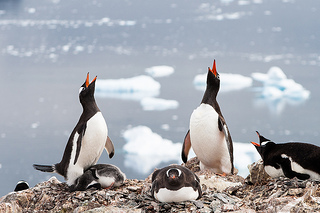

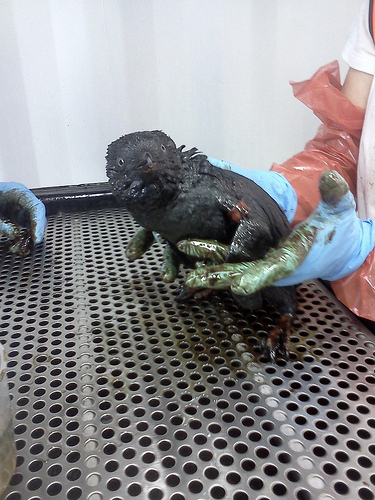

Sources: 1. Photo 1


Comments